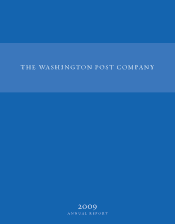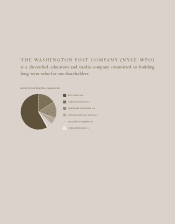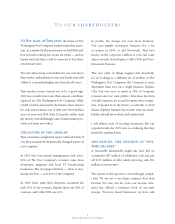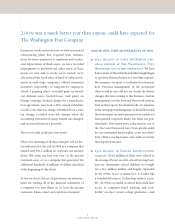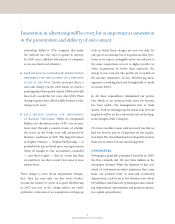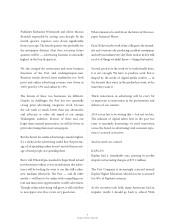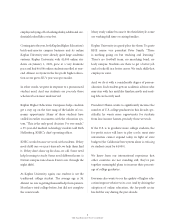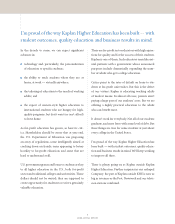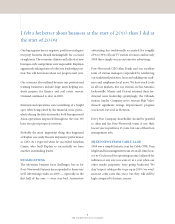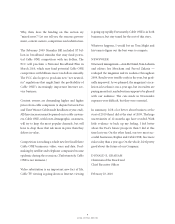Washington Post 2009 Annual Report Download - page 9
Download and view the complete annual report
Please find page 9 of the 2009 Washington Post annual report below. You can navigate through the pages in the report by either clicking on the pages listed below, or by using the keyword search tool below to find specific information within the annual report.
7
2009 ANNUAL REPORT
In the decade to come, we can expect significant
advances in:
n technology and, particularly, the personalization
of education to specific students;
n the ability to reach students where they are: at
home, at work — virtually anywhere;
n the tailoring of education to the needs of working
adults; and
n the export of western-style higher education to
international students who are hungry for high-
quality programs, but don’t want (or can’t afford)
to leave home.
As for-profit education has grown, so have its crit-
ics. Shareholders should be aware that at year-end,
the U.S. Department of Education was proposing
an array of regulations, some intelligently aimed at
cracking down on frauds; some appearing to betray
hostility to for-profit education; and some that are
hard to understand at all.
U.S. government grants and loans to students are key
to all higher education in the U.S., both for-profit
sector and traditional colleges and universities. Those
dollars should not be wasted; they are supposed to
create opportunity for students to receive a genuinely
valuable education.
There are for-profit sector educators with high aspira-
tions for quality and for the success of their students.
Kaplan is one of them. Such educators seem like nat-
ural partners with a government whose announced
purposes include dramatically expanding the num-
ber of adults who get a college education.
Critics point to the rates of default on loans to stu-
dents at for-profit universities. But this is the defect
of our virtues: Kaplan is educating working adults
of modest means. In almost all cases, parents aren’t
paying a large part of our students’ costs. But we are
offering a highly practical education to the adults
who can benefit most.
It doesn’t work for everybody. Not all of our students
graduate, and most leave with some level of debt. But
these things are true for some students at just about
every college in the United States.
I’m proud of the way Kaplan Higher Education has
been built — with student outcomes, quality educa-
tion and business results in mind. We’ll keep working
to improve all three.
There is plenty going on at Kaplan outside Kaplan
Higher Education. Further surprises in our reshaped
Company: the part of Kaplan outside KHE is now as
big in revenues as the Post, Newsweek and our televi-
sion stations combined.

